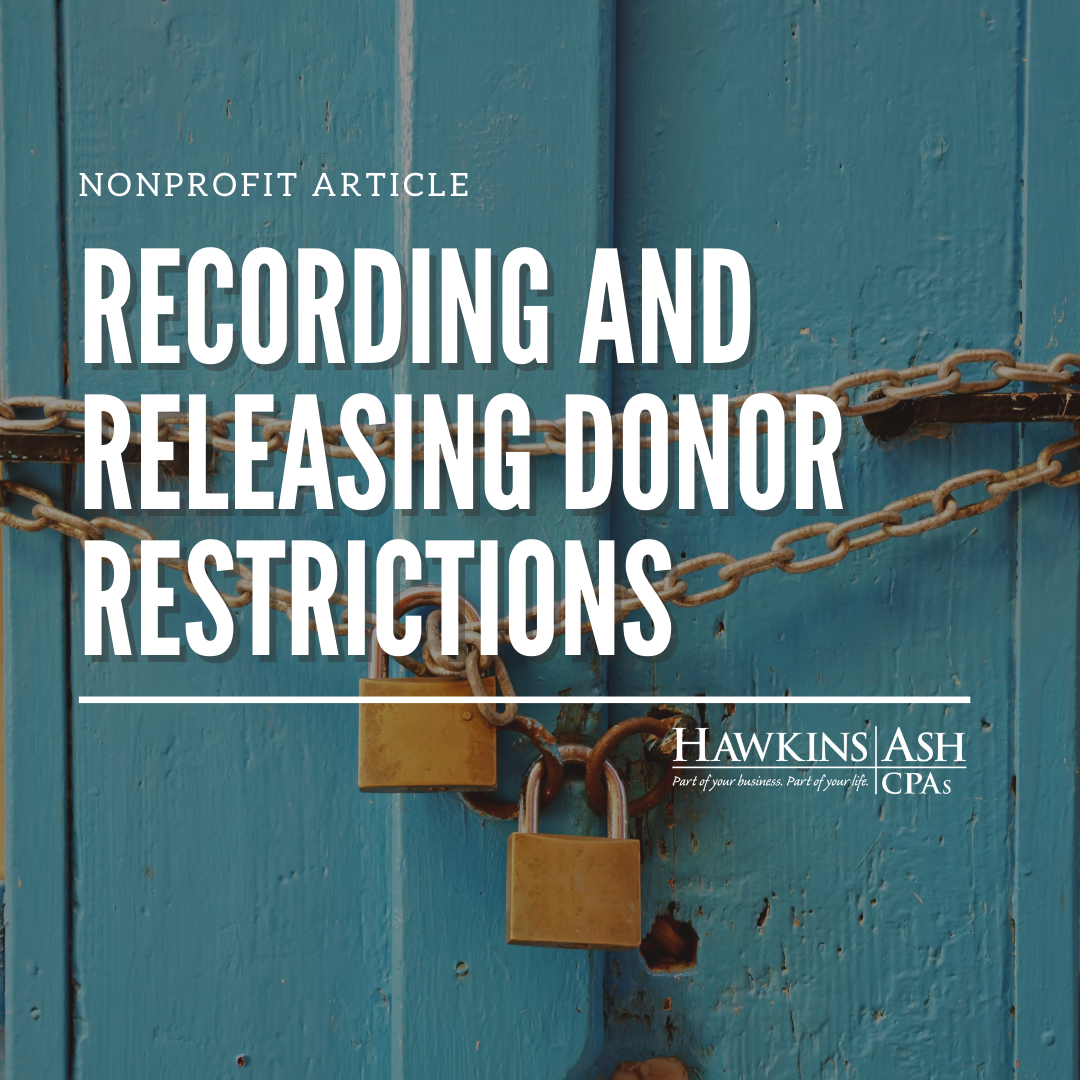When a donor makes a contribution, nonprofits must have the proper policies and procedures in place to ensure the funds are being spent in accordance with the donor’s intent for the donation. Knowing when there are donor restrictions on a contribution and complying with that restriction is one of the most difficult aspects of nonprofit accounting.
The first step in ensuring proper policies and procedures are in place to spend funds in accordance with the donors’ wishes is to understand the different types of donor restrictions. There are three types of donor restrictions, which are described below: unrestricted, temporarily restricted and permanently restricted. Once this is understood, a proper system for tracking restrictions is a necessity.
Donor Restrictions
Is the donor okay with the contribution being spent based on the greatest need as determined by management? If the answer is yes, this would be an unrestricted contribution. When seeking donations, instead of asking donors to support individual projects or purchases, consider requesting donations that support the organization as a whole. This will provide the organization with more flexibility when it comes to spending the contribution.
The donor may request that the donation be spent on a certain item, or for a certain purpose. This would be a temporarily restricted contribution. Temporarily restricted contributions require more tracking because once the restriction has been met; the revenue will need to be released to unrestricted revenue.
The last type of donor restriction is permanently restricted. With this type of contribution, the donor’s intent is for the principal amount to stay intact indefinitely while the earnings may be spent. In some cases, the earnings may be unrestricted and at other times, earnings may be temporarily restricted.
Tracking Donor Restrictions
It is very important to keep documentation of the donor restrictions and to track these restrictions either in the general ledger or other software, such as Microsoft Excel. This will help when dealing with net assets released from restriction. By keeping proper documentation of the restrictions and spending of the restricted dollars, it becomes easier to demonstrate to the donors, auditors and the Board of Directors that the funds were spent in accordance with donor restrictions. For example, a donor may stipulate that the contribution be spent on supplies. This would be recorded as a temporarily restricted contribution and an increase in temporarily restricted net assets. Once the organization purchases the supplies, a release from restriction will be recorded resulting in a decrease in temporarily restricted net assets and an increase in unrestricted net assets.
One option to streamline the release from restriction is to adopt a policy that would allow for temporarily restricted funds to be considered unrestricted if the restriction has been met in the same period the funds were received. In order to adopt this policy, the organization must treat all donor-restricted contributions similarly and consistently follow the policy. Also, the policy must be disclosed in the notes to the financial statements.
By understanding the type of restriction and properly tracking the restrictions, nonprofit management can ensure donors that their money is being spent in accordance with their intent. If you have questions, please contact us.





